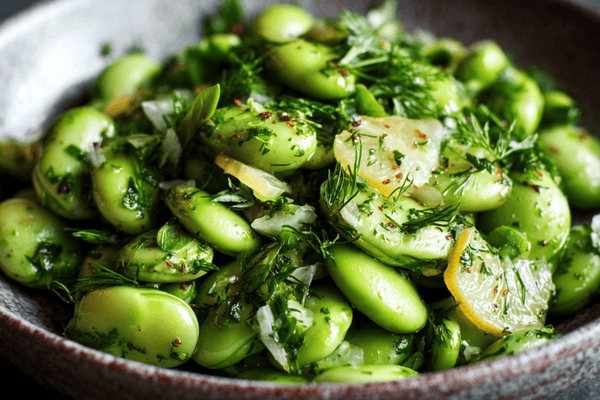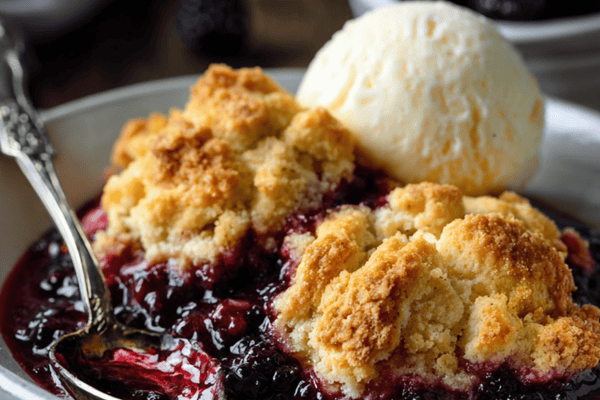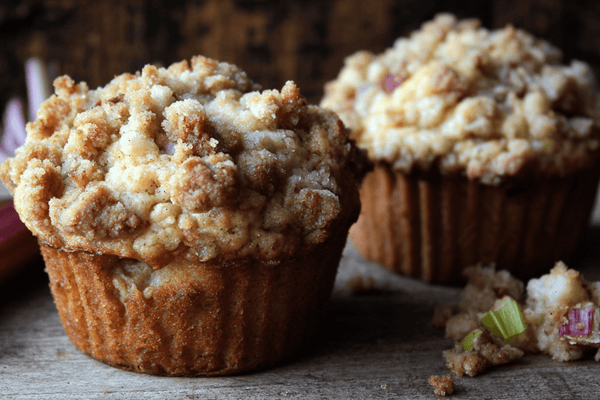 When we look at Japanese knives, it’s very easy to see the differences between the blades. Naturally, these different designs mean that each knife is intended for a separate purpose. If you’ve just bought a set of Japanese kitchen knives then we know you’ll be keen to get started. But before you do; just make sure that you’re familiar with how to use each one.
When we look at Japanese knives, it’s very easy to see the differences between the blades. Naturally, these different designs mean that each knife is intended for a separate purpose. If you’ve just bought a set of Japanese kitchen knives then we know you’ll be keen to get started. But before you do; just make sure that you’re familiar with how to use each one.If you’re standing with your deba knife in hand, ready to prepare your next meal, this guide will tell you everything you need to know.
Table of contents
What Is a Deba Knife? - A Brief Introduction
In Japan, the deba knife goes by its full name; the deba bocho. This is a traditional type of chef's knife that comes in a variety of sizes between 15cm and 33cm. However, the average size for a deba bocho is around 18cm. The deba knife is most commonly used for fish but this is something that we will look at in more detail later on.You will notice that the deba bocho is a wide, tapered blade with a thick spine and a good degree of stability and sturdiness. Much like other types of Japanese kitchen knives, the deba bocho has an incredibly sharp edge. The blade has a pointed tip which makes it ideal for jobs like filleting, cleaning and removing the heads of fish.
However, while this may look like a very robust piece of kitchen equipment, it’s important to keep in mind that the deba knife isn’t suited to jobs that involve tough meats or bones. Users should also avoid applying undue pressure perpendicular to the length of the blade as this can cause the delicate metal to crack.
The deba bocho is a single bevel knife and this is true of many types of Japanese blades. These are pretty weighty knives that allow the user to glide easily through the food, delivering a neat, clean cut.
But what does the word deba even mean? Well, if you make a direct translation then you get something that means pointy carving knife. But that shouldn’t be taken literally as the deba isn’t anything like the European carving knives we are used to using. These blades are used to slice meats such as roasted joints and poultry but a deba knife isn’t suitable for this.
Different Types of Deba Knives
 It probably won’t come as much of a surprise to learn that there isn’t just one single type of deba knife. In fact, there are several and each one has its own intended use as well as its pros and cons. However, if you were looking to get your hands on the most authentic and traditional type of deba knife, you’d want to look for the hon-deba which is considered by the Japanese to be the ‘true deba bocho.’ With that in mind, let’s explore some of the other variations.
It probably won’t come as much of a surprise to learn that there isn’t just one single type of deba knife. In fact, there are several and each one has its own intended use as well as its pros and cons. However, if you were looking to get your hands on the most authentic and traditional type of deba knife, you’d want to look for the hon-deba which is considered by the Japanese to be the ‘true deba bocho.’ With that in mind, let’s explore some of the other variations.
Ko Deba
Ko deba translates to the small deba as the blade on these knives is not usually any bigger than 12cm. These are brilliant when you’re working with smaller fish species and will do a great job at filleting and cleaning them. Do keep in mind that some people refer to these knives as aji deba or ajikiri, in the interest of avoiding confusion.
Yo Deba
The yo deba is a European version of the Japanese deba knife and the key identifying feature that sets it apart is the double bevel blade. It is similar to its hon deba cousin in that the blade is very thick and wide but you’ll usually find the blade to be up to 30cm in length. While this is a great knife for butchering, you’ll find it far less precise since double bevelled blades can never be as sharp.
Ai Deba
While the traditional hon deba has a wide, thick blade, the ai deba’s blade is much thinner and a lot more lightweight. They can get pretty long and some will even go up to 27cm. Interestingly, the word ai means both in English and this is in relation to the knife’s dual ability. You see, it works just as well as a filleting knife as it does for slicing. Most chefs will use this for medium-sized fish.
Mioroshi Deba
The mioroshi deba has a much longer blade than any other type of deba bocho and this can measure up to 33cm. What’s more, this particular type of deba knife is much thinner than others making it ideal for filleting.
Kawasaki Deba
Known in English as the crab deba, this knife is favoured by chefs for filleting and cutting shellfish. Most commonly it’s used for lobster and crabs and can be up to 21cm in length so it’s a little shorter than some of the other types of deba bocho. It has a unique design feature in that the single bevel is on the opposite side to normal. This is so that the user doesn’t cut through the meat of the crab when cutting through the shell.
How Are Deba Knives Made?
The deba knife was invented way back at the end of the 1800s in the Edo period. It’s thought that they were first used in Sakai which is in Osaka and were actually designed by Portuguese people as a way of cutting tobacco before it was exported. However, owing to the specific characteristics of these knives, they soon became popular for cutting and filleting fish.If you get your hands on a proper Japanese deba knife then you can almost guarantee that it would have been hand forged by master craftsmen in Japan. That said, there are some companies that mass produce these knives so if you want the real deal then it’s worth checking out the company before you buy.
The work that goes into making a hand-crafted deba knife is very impressive which is why you should expect to make a bit of an investment when buying one. The blacksmith must start with a steel blank which they heat and then hammer to start forming the shape of the deba bocho. After this, the blacksmith will quench the metal in cold water as this serves as a way of making the steel stronger. But this isn’t a one-off process and it must be repeated several times until the true shape of the blade is achieved.
Once this is done, the blacksmith will need to sand down the edges of the blade to remove any roughness. They then place it into a furnace which further increases the hardness of the steel due to restructuring at a molecular level. Pretty impressive, right?!
The final stage of your deba knife’s construction involves hand pounding which is used to perfect the shape before attaching the handle. This knife-making craft isn’t something that just anyone can do and you’ll find that a lot of Japanese artisans pass their knowledge down through the generations resulting in a number of small family-run businesses that produce extremely high-quality knives.
Choosing the Right Type of Steel
If you have read any of our other articles on knife making, you will know that there are generally two types of steel used in this industry; carbon steel and stainless steel. This is no different when it comes to the construction of Japanese knives including the deba bocho.The type of steel used in the construction of the knife will determine things like how easy it is to sharpen, its edge retention, level of resistance to corrosion and how durable the blade is.
If you choose a carbon steel blade then you’re looking at something that’s going to need a little more TLC in terms of maintenance. This is because this material is a lot more susceptible to rust and staining. You’ll notice that the blade will develop a patina over time and if it isn’t cleaned and oiled correctly then it won’t be long before it starts to rust.
However, the upside of carbon steel knives is that it is much easier to sharpen and even then, this isn’t something you will have to do very often as the edge retention of this material is far superior.
When you choose a stainless steel deba bocho, you are getting something that has an element of chrome in it which ensures that the material is as rust proof as possible. You’ll also find that these knives are a lot more durable and not as likely to suffer from chips and marks.
Another great thing about stainless steel is how affordable it is, even when you’re looking at hand crafted knives, you won’t pay as much as carbon steel. But you should keep in mind that the edge retention is nowhere near as good and the material is significantly more difficult to sharpen.
With all of that in mind, you will notice that most Japanese deba knives are made from carbon steel since this allows for something far more durable and robust.
What Do You Use a Deba Knife For?
 As you probably understand by now, the deba bocho is primarily used for preparing and cutting fish. Most commonly, you will see it being used to fillet fish, remove the bones and take off the head. It is so good for these purposes as its weight and super sharp edge mean that it will make strong clean cuts through the meat. This applies even for tougher parts of the fish.
As you probably understand by now, the deba bocho is primarily used for preparing and cutting fish. Most commonly, you will see it being used to fillet fish, remove the bones and take off the head. It is so good for these purposes as its weight and super sharp edge mean that it will make strong clean cuts through the meat. This applies even for tougher parts of the fish.However, the deba knife is also strong enough to be used with things like chicken and other poultry. It’s not so commonly used for tougher joints of meat as the blade isn’t strong enough to deal with touch bones.
The deba bocho has some pretty special features that make it perfect for the purpose for which it was designed. This includes a sturdy heel which allows the chef to remove the tail and head of the fish without causing any damage to the knife. It also has a very small, pointed tip that gives you the advantage of being able to fillet cleanly as well as feeling the bones. You will also notice that deba bocho has a perfectly designed edge that glides through the meat allowing you to get much closer to the bone, for less waste.
When you first use a deba knife, you may find it a little difficult to handle. This is especially true if you have been used to cutting with a European filleting knife. However, it doesn’t take too much practice to get the cutting technique spot on and you’ll soon be reducing waste, and making perfectly precise cuts just like the pros.
The Anatomy of a Deba Knife
 In your quest to get to know the deba knife properly, you’ll need to understand its anatomy. While to a layman, all knives might appear the same, there are subtle differences between each one that make them perfect for their purpose.
In your quest to get to know the deba knife properly, you’ll need to understand its anatomy. While to a layman, all knives might appear the same, there are subtle differences between each one that make them perfect for their purpose.
Size
The most common type of deba bocho is the hon deba, as we discussed earlier on. Normally, you’ll find that the blade measures anywhere between 15cm and 33cm although 18cm is pretty much average. This is because this size works well for most users without being too small to cut properly or too large that you lose control.
The thickness of the deba bocho blade will also vary somewhat but as a rule of thumb, you can expect it to be between 5mm and 9mm. With all of that in mind, when choosing a deba knife, you should select a blade that best matches the type and size of fish you will be working with.
In terms of size, you’ll also want to consider the weight of the knife. Since the deba is intended for use with whole fish, it has to be heavy and very well-balanced.
Shape
Another aspect of the deba bocho that you need to familiarise yourself with is its shape. Looking at the knife, you will easily be able to see how the blade tapers with the heel end being much wider and the tip being incredibly pointed.The spine of the deba bocho is very thick to make the knife more robust. There is a relatively obtuse angle towards the back of the heel which makes this knife easily able to perform tasks like removing fish heads without sustaining any damage.
Knife Edge
Let’s get down to business, shall we? When we talk about knives, one of the most important things that people want to know about is the blade edge. As we mentioned earlier on, the deba, like many Japanese knives, has a single bevel edge which is usually somewhere between ten and fifteen degrees. The benefit of this is that the blade remains amazingly sharp.When you use a single bevel knife like the deba, it is only the cutting edge that makes contact with the food, resulting in a much more clean and even cut. The advantage of this is that the food stays fresher for longer and the taste and texture keep their quality. If you use a double bevel knife, it would be much more difficult to cut softer foods such as fish owing to the deeper sharpening angle.
One important thing to keep in mind is that the majority of deba knives are sharpened to suit right-handed users. But that doesn’t mean that if you’re a leftie, you have to miss out. There are lots of left-handed knives out there, it just pays to check before you buy. We even have a guide on left-handed knives here that might interest you.
Handle
Having a knife with a good handle is just as important as having a knife with an efficient blade. When it comes to handles, you will find that knives either have a western handle or the more traditional Japanese handle known as the 'wa' handle. It goes without saying that pretty much all deba bochos feature the latter of the two.
You’ll want to look at the handle shape here as there are three different choices; the oval handle, the octagonal handle and the d-shaped handle. If you want something with a more ergonomic grip then we would suggest going for the d-shaped handle or perhaps the octagonal handle. But much of this is to do with your personal preference so it’s worth trying different ones out.
Final Thoughts
There are lots of different types of Japanese knives and each one is perfectly formed for its purpose. But it’s no good trying to use any given knife for just any task which is why we created this guide on everything to do with the deba bocho.This knife is long, narrow, pointed and heavy making it ideal for working with soft meats and fish. These Japanese knives are a staple in any professional kitchen and in the right hands, create a clean, even and precise cut.


